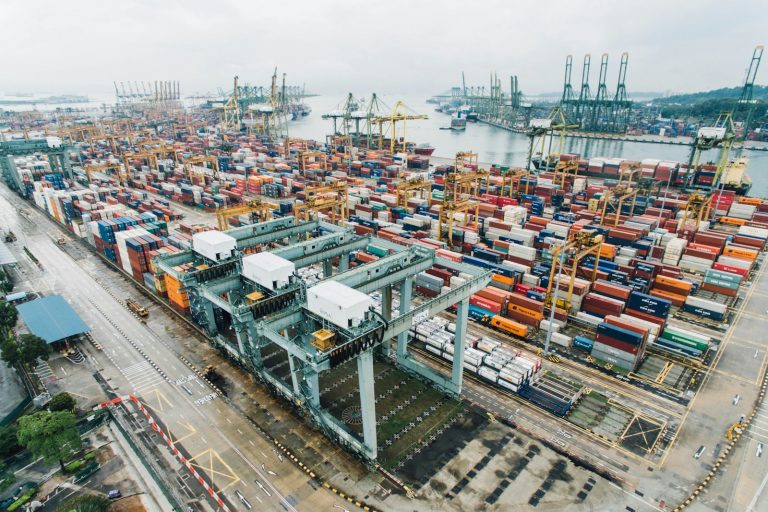International shipping is vital for global trade, supporting businesses that sell goods across borders. As e-commerce and globalization grow, it’s important to understand the factors that affect shipping rates. These include weight, size, distance, the type of goods, and delivery speed. Knowing these factors helps control costs and ensures timely deliveries.
This guide will look closely at the key elements influencing international shipping cost, different shipping services, and the role of customs duties and taxes. We’ll also discuss how changing fuel prices and extra surcharges make rate calculations more complex. Finally, we’ll offer tips for reducing shipping costs to help businesses improve efficiency.
Factors Affecting International Shipping Rates
Understanding what affects international shipping rates involves knowing a few key factors. The weight and size of a package play a big role—bigger and heavier shipments cost more. The distance it travels also matters, with longer distances usually leading to higher fees due to extra fuel and logistical needs.
How fast you want the package delivered is another factor—faster shipping options are more expensive. The type of items being shipped is important too; fragile, hazardous, or perishable goods often need special care, adding to the cost. By knowing how these factors work together, you can make better choices to save on shipping and boost efficiency.
Types of Shipping Services
When choosing shipping options, it’s important to understand the differences between air freight, sea freight, and courier services. Air freight is fast and reliable, ideal for urgent shipments, but comes with a higher price tag. Sea freight, on the other hand, is more affordable for large, heavy goods but involves slower transit times.
Courier services offer door-to-door delivery and are perfect for small packages needing quick, personal delivery. Additionally, couriers often provide tracking and flexible delivery options. Weighing the pros and cons of each option helps ensure your shipping strategy is both efficient and cost-effective for your specific needs.
Customs Duties and Taxes
Customs duties and taxes are key in determining international shipping costs. These charges, imposed by the destination country, can significantly impact the overall shipping price. Rates vary based on factors such as the type of goods, their declared value, and specific national regulations. For instance, some countries impose high tariffs on electronics, while others focus on textiles or luxury items.
Predicting exact costs can be difficult because these fees differ widely. In addition to duties and taxes, clearing customs may involve extra fees or paperwork, which can cause further delays. Businesses should factor in these possible expenses to avoid unexpected costs and ensure timely deliveries. A solid understanding of international customs rules and procedures can help better estimate shipping expenses and minimize disruptions in cross-border trade.
Impact of Fuel Prices and Surcharges
The ups and downs of fuel prices and the addition of various surcharges make calculating international shipping rates more complicated. Fuel surcharges can change frequently as global oil prices shift, which causes shipping costs to rise unexpectedly. During high-demand times, peak season surcharges are also added, making it even harder to estimate costs.
These extra fees create financial uncertainty for businesses, so it’s important to stay updated on current and upcoming rates. Understanding these changing factors helps businesses manage their shipping budgets better and avoid surprises. By keeping an eye on these variables, businesses can make more accurate forecasts and smarter decisions in international shipping.
Strategies to Minimize Shipping Costs
Reducing international shipping costs requires a combination of practical strategies. Bulk shipping, which consolidates multiple smaller shipments into one, reduces costs by minimizing the number of individual shipments and streamlining the process. Choosing the right carrier is also key; comparing different carriers based on factors like shipping zones, delivery times, customer reviews, and hidden fees can lead to significant savings. Negotiating rates with carriers, particularly for businesses that ship consistently, can yield even more favorable terms, such as volume discounts or flexible delivery options.
Additionally, using technology like automated tracking systems to monitor deliveries helps prevent delays, misplaced packages, and unexpected costs. By adopting these strategies, businesses and individuals can achieve more cost-effective and reliable shipping solutions while keeping their operations efficient and customer-friendly.
International shipping is essential for global commerce, and managings its specifics is important for businesses aiming to optimize costs and efficiency. Understanding factors like weight, size, distance, and delivery speed can lead to more informed decisions and cost-saving opportunities. Shipping options—ranging from air freight to sea freight and courier services—offer varying benefits depending on urgency and budget. Additionally, customs duties and fluctuating fuel prices add layers of complexity to cost management. By leveraging practical strategies and staying informed about industry changes, businesses can better manage shipping expenses and enhance their global trade operations.

0 Comments